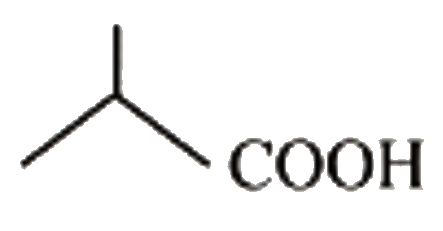How many of the following show vivipary? Pteropus, Camelus, Delphinus, Macropus, Ornithorhynchus, Neophron, Aptenodytes, Rattus, Equus
6
5
8
9
The correct Answer is:A
To determine how many of the listed organisms show vivipary, we need to identify which of them give birth to live young instead of laying eggs. Here’s a step-by-step breakdown:
1. Understanding Vivipary: Vivipary refers to the reproductive method where an organism gives birth to live young rather than laying eggs. This is common in many mammals.
2. Identifying Each Organism:
- Pteropus: This is the flying fox, a type of bat. Bats are mammals and they give birth to live young. (Viviparous)
- Camelus: This is the camel. Camels are also mammals and give birth to live young. (Viviparous)
- Delphinus: This refers to the common dolphin. Dolphins are marine mammals that give birth to live young. (Viviparous)
- Macropus: This is the kangaroo. Kangaroos are marsupials, which also give birth to live young. (Viviparous)
- Ornithorhynchus: This is the platypus. The platypus is a monotreme, which lays eggs instead of giving birth to live young. (Not Viviparous)
- Neophron: This is a type of bird (the Egyptian vulture). Birds lay eggs, so they are oviparous. (Not Viviparous)
- Aptenodytes: This is the penguin. Penguins are also birds and lay eggs. (Not Viviparous)
- Rattus: This is the rat. Rats are mammals and give birth to live young. (Viviparous)
- Equus: This refers to horses. Horses are mammals and they give birth to live young. (Viviparous)
3. Counting the Viviparous Organisms:
- The organisms that show vivipary are: Pteropus, Camelus, Delphinus, Macropus, Rattus, and Equus.
- This gives us a total of 6 organisms that are viviparous.
Final Answer: 6 organisms show vivipary.
---
- Pteropus: This is the flying fox, a type of bat. Bats are mammals and they give birth to live young. (Viviparous)
- Camelus: This is the camel. Camels are also mammals and give birth to live young. (Viviparous)
- Delphinus: This refers to the common dolphin. Dolphins are marine mammals that give birth to live young. (Viviparous)
- Macropus: This is the kangaroo. Kangaroos are marsupials, which also give birth to live young. (Viviparous)
- Ornithorhynchus: This is the platypus. The platypus is a monotreme, which lays eggs instead of giving birth to live young. (Not Viviparous)
- Neophron: This is a type of bird (the Egyptian vulture). Birds lay eggs, so they are oviparous. (Not Viviparous)
- Aptenodytes: This is the penguin. Penguins are also birds and lay eggs. (Not Viviparous)
- Rattus: This is the rat. Rats are mammals and give birth to live young. (Viviparous)
- Equus: This refers to horses. Horses are mammals and they give birth to live young. (Viviparous)
- The organisms that show vivipary are: Pteropus, Camelus, Delphinus, Macropus, Rattus, and Equus.
- This gives us a total of 6 organisms that are viviparous.
Topper's Solved these Questions
Similar Questions
How many of the following species can show resonance.

View SolutionHow many of the following show variable oxidation states in their compounds?
Sc,Cr,Cu,Zn,Fe,Hg,La
View SolutionHow many animals from the following are warm- blooded with 4-chambered heart and oviparous condition?
[Corvus, Struthio, Macropus, Ornithorhynchus, Balaenoptera, Pteropus, Delphinus, Psittacula, Chelone, Calotes, Crocodilus]
View SolutionHow many of the following shows epigeal seed germination?[Cucurbits, Rice, Mustard, Mango, Castor, Gram, Onion, Beans, Groundnut]
View SolutionHow many of the following are examples of mammals in the box given below? Testudo, Neophron, Canis, Felis, Pteropus, Catla, Carcharodon, Macropus, Rattus
View SolutionHow many of the following elements show +2 as their most stable oxidation state ?
Sc,Sn,Zn,Be,Pb,Co,Ag,Ti,Fe
View SolutionHow many of the following acids will show higher reactivity towards esterification reaction as compared to acetic acid?


View SolutionHow many of the following shows zygomorphic flowers with valvate/imbricate aestivation?
Indigofera, Lupin, Petunia, Aloe, Colchicum autumnale, Sesbania, Trifolium, Solanum
View SolutionHow many of the following organisms show the type of symmetry which is similar tie actinomorphic flowers?
Spongilla , Adamsia, Gorgonia , pleuroblanchia , Taenia , Cucmaria , Ophiura
View SolutionHow many of the following quantities show increase in their value of increasing temperature?
a. Extent of physisorption of gases on solids.
b. Electrical conductivity of an electrolyte solution.
c. Electrical conductivity of an electrolyte solution.
d. Ionic product of water.
e. Vapour pressure of a pure and liquid.
f. Vapour pressure of an ideal solution which follows Rault's law, (keeping composition same)
g. Solubility of gases in liquids.
h. Reducing power of carbon monoxide for extraction of metals
Correct answer:
View Solution